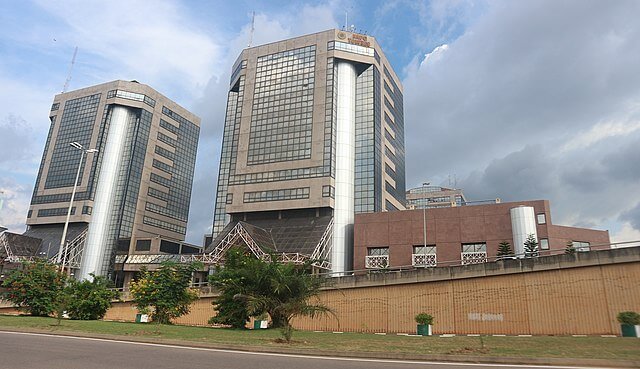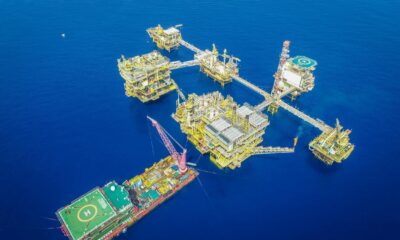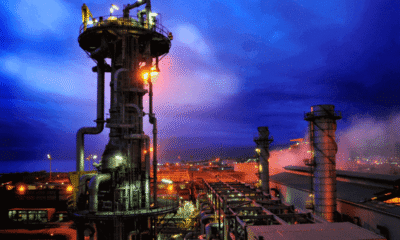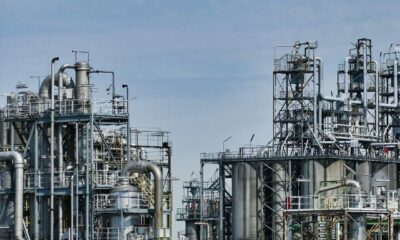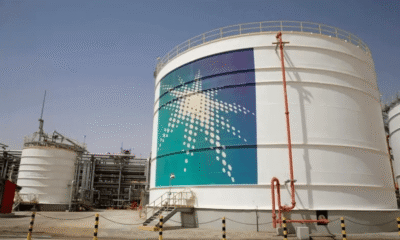NNPC GCEO, Bayo Bashir, sacked the managing directors (MDs) of its three refineries. The refineries include the Port Harcourt Refining Company, Warri Refining and Petrochemical Company, and the Kaduna Refining and Petrochemical Company.
The sack came amid reports of the abysmal performance of Port Harcourt and Warri refineries after their alleged rehabilitation in 2024.
Despite the announcement of the production of petroleum products at the Port Harcourt refinery, the plant had operated below 50%.
Recall that in April 2025, President Tinubu sacked Mele Kyari as GCEO of NNPC and replaced him with Bayo Ojulari. An April 2025 document from the Nigerian Midstream and Downstream Petroleum Regulatory Authority disclosed that the Port Harcourt refinery, which gulped $897.6 million in maintenance expenses, failed to produce Premium Motor Spirit (petrol).
As a result, NNPC shut down the refinery barely a month after former NNPCL GCEO Mele Kyari declared it operational. Therefore, NNPC’s sacking of the MDS of its three refineries is part of its plan to revamp its refining capacity.
MDs Affected by NNPC’s Sack
| Refinery |
Former MD |
Status |
Reason for Dismissal |
| Port Harcourt Refining Company (PHRC) |
Ibrahim Onoja |
Sacked by NNPC GCEO |
Delays in achieving full rehabilitation despite initial restart |
| Warri Refining and Petrochemical Company (WRPC) |
Efifia Chu |
Sacked by NNPC GCEO |
Failure to meet key milestones; internal bottlenecks; underwhelming rehabilitation pace. |
| Kaduna Refining and Petrochemical Company (KRPC) |
Mustafa Sugungun |
Sacked by NNPC GCEO |
Prolonged dormancy; security and labour challenges; stalled rehab efforts. |
Port Harcourt Refinery: Partially Restarted
In 2021, NNPC began rehabilitating the PHRC after the Federal Executive Council (FEC) approved $1.5 billion for the project. In November 2024, NNPC announced that the Port Harcourt refinery had commenced production after a long rehabilitation period. The announcements raised public hopes that the long-awaited revitalization of NNPC’s refineries had begun. However, logistical delays and legacy technical issues have slowed the complete restart.
Warri and Kaduna
In August 2024, NNPC unveiled plans to engage reputable and credible Operations and maintenance companies to operate and maintain the Warri and Kaduna refineries. These new operators will be responsible for running day-to-day operations and rehabilitating the facilities. However, internal bottlenecks are impeding the progress of O&M tenders. Located in northern Nigeria, the Kaduna refinery remains idle, afflicted by pipeline vandalism, obsolete equipment, and corruption.
Read: Ojulari Pledges Strategic Collaboration with Stakeholders
Background: NNPC’s Refinery Challenges
Nigeria is Africa’s largest crude oil producer, producing an average of over 1.35 million barrels daily (2024). Including condensates, production averaged 1.56 million barrels per day.
Four state-owned refineries operated by NNPC are located in the country: the 110,000 bpd Kaduna refinery, the 60,000 bpd Old Port Harcourt refinery, the 150,000 bpd New Port Harcourt refinery, and the Warri refinery. These refineries have a combined installed capacity of 445,000 barrels per day.
However, despite massive investments in rehabilitating these refineries, their operating capacity hovered between 15% and 30% per annum. Sometimes, during this period, they recorded zero output.
According to a House of Representatives report in 2023, over ₦11.35 trillion was spent on refineries between 2010 and 2020 with no significant improvement in output.
Historical Underperformance
Several factors have contributed to the chronic underperformance of Nigeria’s refineries:
NNPC refineries were built between the mid 1960s to mid 1980s; Kaduna (1976), Warri Refinery (1978), the old Port-Harcourt refinery (1965), and the new Port-Harcourt refinery (1985). However, all four refineries have suffered decades of neglect and poor turnaround maintenance routines.
Multiple investigative reports have uncovered the mishandling of turnaround maintenance (TAM) funds, with billions of dollars disbursed on rehabilitation efforts that delivered no tangible output.
NNPC’s refineries rely on oil pipelines that transverse insecure regions often targeted by vandals, leading to frequent shutdowns.
The four refineries are operationally inefficient due to outdated equipment and politically influenced staffing decisions, resulting in bloated operations.
Changing government policies, fuel subsidy structures, and the lack of clear privatization strategies have dissuaded private investment, especially Shell.
Economic Consequences
High Dependence on Refine Fuel Imports: Due to the abysmal capacity of NNPC’s refineries, Nigeria imports more than 90% of its refined petroleum products, leading to a continuous drain on foreign exchange reserves.
Persistent Fuel Scarcity: Fuel supply and logistic disruptions in fuel imports frequently cause fuel queues and price hikes in the country.
Other Possible Reasons NNPC Took Action
Apart from the abysmal progress in rehabilitating the four refineries, NNPC’s new GCEO sacked the Managing Directors (MDs) for other reasons.
Former President Muhammadu Buhari signed the Petroleum Industry Act (PIA) 2021. The act allows NNPC to transition from a government agency to a commercial, profit-oriented company. Unfortunately, the underperformance of the refineries directly undermines NNPCL’s credibility as a commercial entity. Therefore, sacking the MDs signals that performance-based performance is now the standard, not political pleasantry.
The Nigerian public has grown weary of constant assurances about refinery rehabilitation. Therefore, dismissing these MDs sends a message that non-performance has consequences. However, massive spending with little to show has led to deep distrust about NNPC’s reform agenda.

